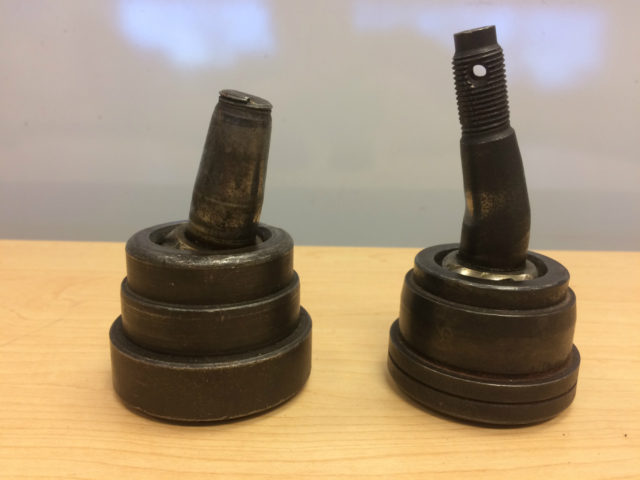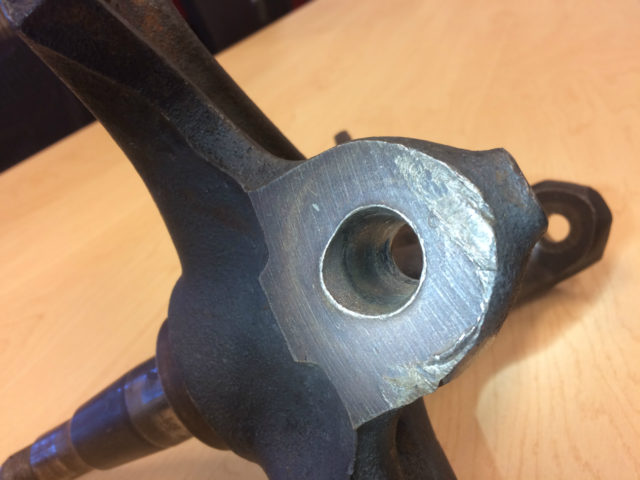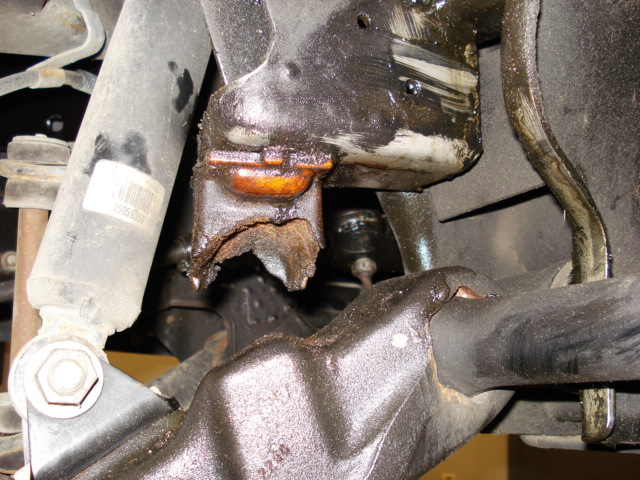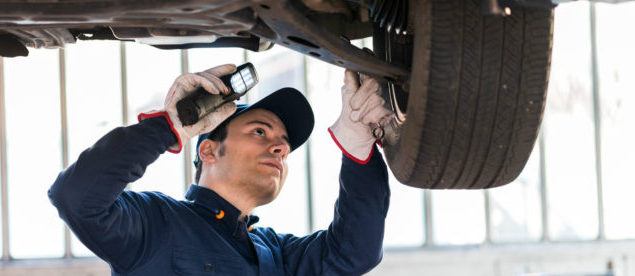NEW BONUS TIP!
If it ain’t broken, you might still have to fix it. A quick Google search for “Worst Pothole Season Ever” will return results for cities and towns all over North America proclaiming 2018 as a record for wheel-grabbing road hazards.
Milder, uneven winters, aging infrastructure, and dwindling municipal budgets are all combining to add pothole avoidance to the list of driving skills.
The broken wheel covers, tie rod ends and ball joints that litter the roadside are evidence of just how bad things are out there. Even worse, potholes don’t stop cars in their tracks, so drivers can continue on with hidden damage, for a while anyway –putting other components, and themselves, at risk.
Indie Garage reached out to Federal-Mogul Motorparts Garage Guru’s Mark Isaac to get the best information on where you should be looking for hidden damage and other potential issues.
Here’s our TOP 10 LIST for POTHOLE DIAGNOSTICS:
NEW BONUS TIP!

When customers come for tire changeover, it’s a good idea to do a quick visual inspection for sidewall damage that can result from hitting sharp, deep potholes. Customers may not have realized how this damage compromises their safety, or how other unseen damage may also have resulted from the impact
1 WHEEL DAMAGE: This is a clue to further damage. While suspension components can suffer from pothole damage, wheels will often take the hit first.
2 COMPONENT DAMAGE: The first thing to take the hit is tires and wheels, but severe hits will damage shock tubes and shafts. And of course springs can crack and break. Really big hits can bend the stud on a balljoint. It can be hard to see some damage, but it’s important to inspect closely.

3 ALIGNMENT: Do a good visual inspection and use the alignment machine as a measurement. Check all the joints and components for looseness and wear. Check chassis height as well.

4 BEARINGS: Tougher to diagnose are wheel bearings and hub assemblies and noise. Sometimes it’s hard to detect which bearing is creating the noise. They take a beating: not just hammering from the road, but also from the salty brine coating roads.
5 CORROSION: Especially at tire shops, you will see a galvanic corrosion where the rim goes on the hub; it can seem okay, but really not have sufficient clamp load. Clean the inside face of the rim where it bolts to the hub. Clean off any rust and corrosion. Remember, this may be the last time anyone looks at the car for six months, or maybe even longer, before the owner brings it in for service.
6 MEMORY STEER: Steering wheel returnability suffers when upper strut bearings get corroded and degraded and are worn to just metal-to-metal. Tie rods and ball joints can be the culprit too. Test drives are important for revealing problems such as creaking, groaning noises, and memory steer.
7 BROKEN SWAY BARS AND LINKS: Customers may not even realize that the car’s sway bars and links have become non-functional, despite the importance of these components to vehicle handling and safety. Corrosion and rough roads can destroy bushings and links.
8 STEERING SHAFT LOOSENESS: General looseness and play in the steering wheel can be the result of wear to the intermediate shaft coming down to the column; some designs use joints, while others use a flex coupling. These collapsible sections can deteriorate over time.
9 TORQUE WRENCH DAMAGE: Torqueing fasteners and chassis parts have become more critical, as there is so much more aluminum used in modern vehicles. Techs may be used to tightening everything with an impact wrench without any trouble; now there is a much greater chance of damaging components from over-torqueing.
10 FRAME DAMAGE: With road salt, deteriorating roads, and an aging light truck fleet, frame breaks are possible. A loose steering condition or rattle could be the result of a broken frame – a very dangerous situation.



I have the tpms valve stems on my Pontiac Torrent. I went to put air in my tire when I tried to unscrew my valve cap the end and valve blew out in my hand.The stem was rotted; $90.00 later it was replaced.